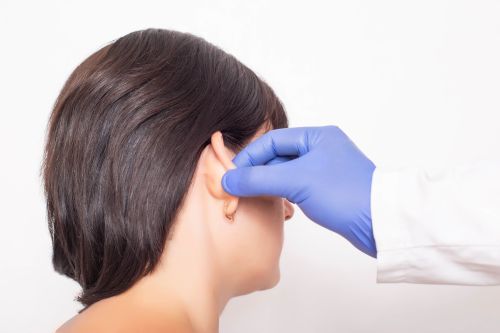Mike Saul
PartnerView Profile
* Indicates a required field
The otoplasty - or ear-pinning - recovery process typically takes up to six months, but many of the primary symptoms will alleviate around the one-week mark. The otoplasty healing process is relatively quick, but the ears can easily be knocked due to their exposed location on the body. Therefore, to ensure your otoplasty recovery goes smoothly and quickly, you should ensure you take the necessary measures to avoid any damage or infection of the wounds.
The experts at Cosmetic Surgery Solicitors have put together the following guide to help you best understand how to maximise healing and minimise problems following an otoplasty cosmetic surgery procedure.

Otoplasty is typically done by making small incisions behind the ear which enable its reshaping. The ear is then pinned in place with stitches so it can heal in the new location. In cases where more work must be done to reach the desired position, small pieces of cartilage may be removed from the back of the ear.
The cosmetic surgeon will most likely use a local anaesthetic to reduce the pain felt during the cosmetic procedure. However, you should expect to feel some pain and tenderness following the procedure. This can be helped by taking low-level painkillers, such as paracetamol and ibuprofen.
Due to the simplicity of the procedure, patients are usually allowed to leave the day of the surgery, but the surgeon may request that they stay for one or two hours after so they can monitor the affected area and be sure that everything went as it should have. The cosmetic surgeon should then provide the patient with aftercare instructions so they understand what steps they must take to ensure the best chances of successful healing.
Incisionless otoplasty is a modern technique that - as the name suggests - does not require incisions to be made to reshape and relocate the ear. Instead, a needle is used to separate the ear cartilage and stitches are placed under the skin.
This otoplasty technique is still being debated by health experts, as some believe it may not be as safe as the traditional method. It is not commonly practised in the UK, so this article will instead focus on the healing process following otoplasty cosmetic surgery that used the incision method.
After the otoplasty procedure, the patient's head may be wrapped in a bandage. This is done to limit bleeding and keep the wounds clean while they begin to close. The pain at this point is usually light and will ease rapidly over the following week. However, tenderness and bruising may remain longer.
The surgeon should advise the patient to keep the bandage on until they remove it. Until it is removed, the patient should not wash their hair or get their ears wet. These rules still apply to patients who have not been provided with a head bandage.
After the bandage is removed, or a week after the surgery, patients may be advised to wear a headband that covers the ears or stops the hair from trailing onto the affected area. This will also keep the ears in place and protect them from the elements. During this time, patients should avoid taking part in any strenuous activity. This period of the recovery process may last up to two weeks.
When washing, patients should avoid baths as dirty water can lead to infection. Instead, patients should take showers and allow the water to gently drain through the hair and onto the affected areas. Patients should avoid submerging their heads.
The final stage of the healing process typically occurs a month after the process and can last up to six months. During this time, most physical activity should be safe, including swimming.
Some light scarring may remain after the healing period, but these will likely fade with time and should be very small.
You may find that your healing process does not go to plan. As with any surgery, there is the chance that something may go wrong. Signs of infection include excessive pain and bruising that does not go away after ten days. The ears may also become asymmetrical.
If you believe something has gone wrong, you should speak to your cosmetic surgeon. However, if you believe that they are at fault for your issue, you should instead seek medical help from a different medical professional, such as your GP.
All medical professionals must uphold a duty of care to their patients. This mandates that they do not cause harm and that they perform their work to a standard set by the government. If they fail to do this, they will have acted with clinical negligence. If this is the case, you may be entitled to make a cosmetic surgery compensation claim. Learn more about how cosmetic surgery compensation is calculated.
Once you have sought medical help, you should consider speaking to a cosmetic surgery negligence claims solicitor, such as those at Cosmetic Surgery Solicitors. A solicitor will help you to seek compensation that will go a long way in helping you pay for any corrective surgery or other support you require, including therapy, following your negligent cosmetic surgery.
Our firm was the first in the UK to focus solely on cosmetic surgery cases, so you can be confident that we understand cosmetic surgery claims inside out and can provide you with the best legal support possible.
To get your cosmetic surgery negligence claim started, or to learn more about otoplasty and medical negligence, speak to us today. Call Cosmetic Surgery Solicitors on 0808 159 6470. Alternatively, fill out an online contact form and we will return your call at a time convenient for you.
Contact our team today by calling 0808 256 7148 or using our online contact form.
Whether you have questions about negligent cosmetic surgery or need assistance with your case, reach out to us today.